The year’s first grizzly bear (Ursus arctos horriblis) sighting in Yellowstone National Park was recorded on March 7, 2023. Interestingly, March 7 was also the date of the first 2022 bear sighting in the park.
A National Park wildlife biologist spotted the bear while on a radio telemetry flight. Unfortunately, there are no photos of the bear, but the wildlife biologist reported it was a male bear weighing around 300-350 pounds. The bear was spotted in Pelican Valley, just northeast of Yellowstone Lake. This is located in the central-eastern part of the park.
Now that Yellowstone’s grizzly bears are waking from their winter hibernation, there are some important things to remember about these apex predators.

The grizzly bears of Yellowstone are waking up from their winter hibernation.
©Steve Boice/Shutterstock.com
Males Appear in March
Male grizzly bears emerge from hibernation first, normally in early March. After a long winter of hibernating, these bears are famished. They often feed on the carcasses of bison and elk that died during the harsh Yellowstone winter. The bear that the Yellowstone wildlife biologist spotted on March 7, 2023, was near a bison carcass.
Grizzly bears can be hyper-aggressive during this initial post-hibernation feeding time. Due to the enhanced danger, the park closes certain areas where there are high concentrations of bison and elk carcasses. These bear management areas will close beginning March 10.
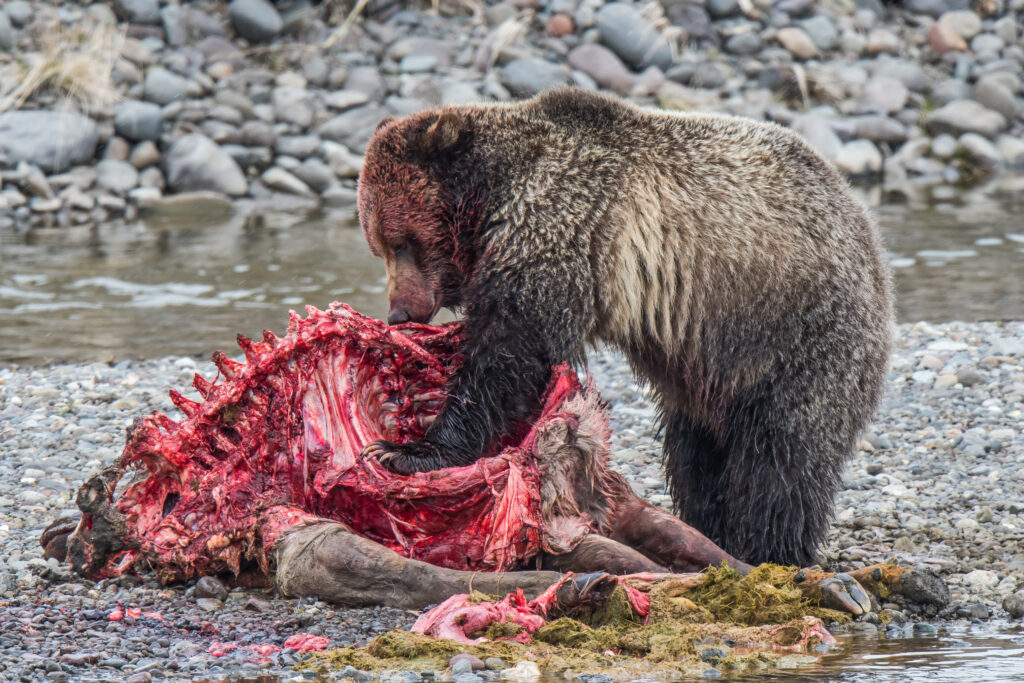
After hibernation, grizzly bears will often feed on elk carcasses, such as this bear, along Yellowstone’s Lamar River.
©Bobs Creek Photography/Shutterstock.com
Females Emerge in April/May
Female bears with cubs appear around a month after the males. These female bears are also quite hungry and have cubs in their care. A hungry mother bear is not a bear to mess with! These bears will aggressively defend against any perceived threat to their cubs or a food source.
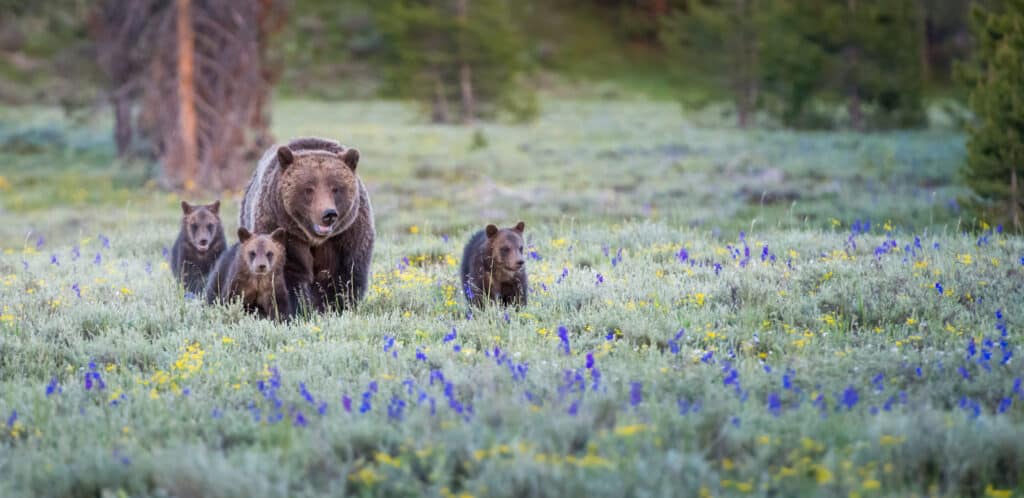
A mother grizzly bear can be exceptionally dangerous.
©iStock.com/Jillian Cooper
Bears Can Show Up Anywhere
All of Yellowstone National Park is grizzly bear habitat. This is even true for the heavily traveled areas, such as the boardwalks around Old Faithful and the park’s other hydrothermal features. The bears are also often seen around the park’s roadways. Wherever you are in Yellowstone, remember you are a visitor in the grizzly bears’ home. They can be found anytime, anywhere in the park.
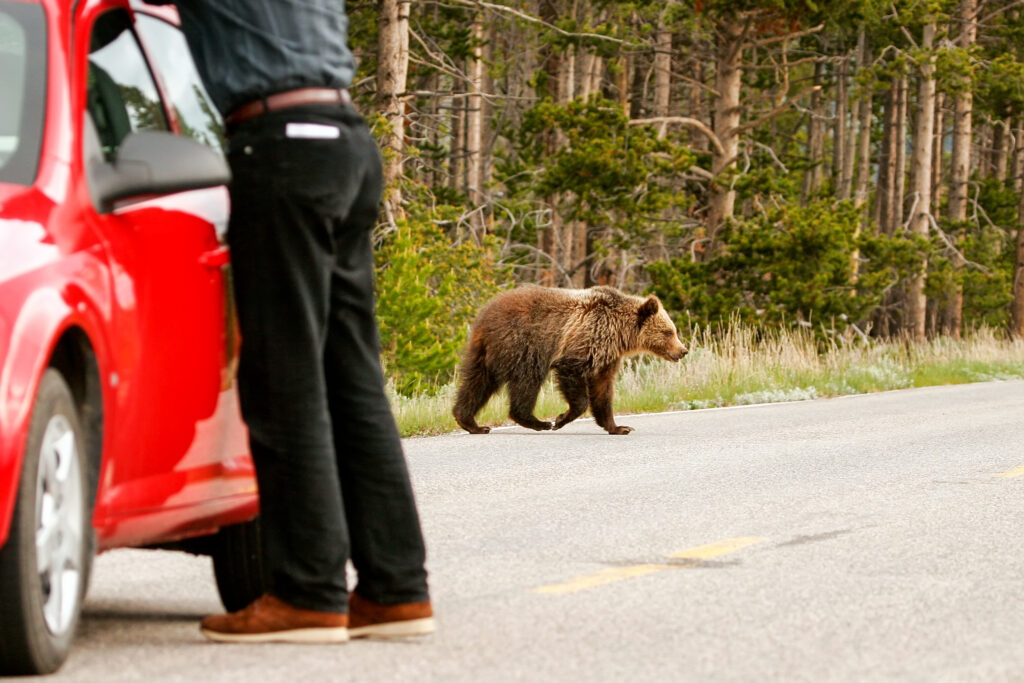
Grizzly bears can appear anywhere in Yellowstone like this young bear crossing a road in the park.
©Don Mammoser/Shutterstock.com
How Likely is it to See a Bear in Yellowstone?

Yellowstone grizzly bears can be at their most dangerous when they first emerge from hibernation.
©Paul Knowles/Shutterstock.com
Yellowstone National Park is inhabited by both black bears, which are so common that their numbers are unknown, and brown bears, of which there are around 100 to 150. As a result, it is one of the best locations to see wild bears and is considered a paradise for bear watchers. A vast amount of people will travel to Yellowstone with the main purpose of seeing bears.
The park spans an extensive area of 3,468.4 square miles and in this vast region, it is not uncommon to see at least 10, possibly even 15 bears in one day. In the past, it was incredibly easy to see these beautiful wild mammals as they were known to congregate in areas where humans would be found, begging or stealing food, and people who ran the hotels would dump garbage with the intention for them to appear.
Thankfully, this no longer happens and the bears exhibit more natural behaviors. While it may not be as easy to find them as simply showing up, as active animals, they can be found in every area of the park.
Go Out in Groups
When hiking or skiing in Yellowstone, always go in a group. A group of people makes more noise, which allows a bear to be alerted to their presence from a greater distance. Walking alone greatly increases your chances of stumbling onto a bear, and a surprised bear is an especially dangerous bear.
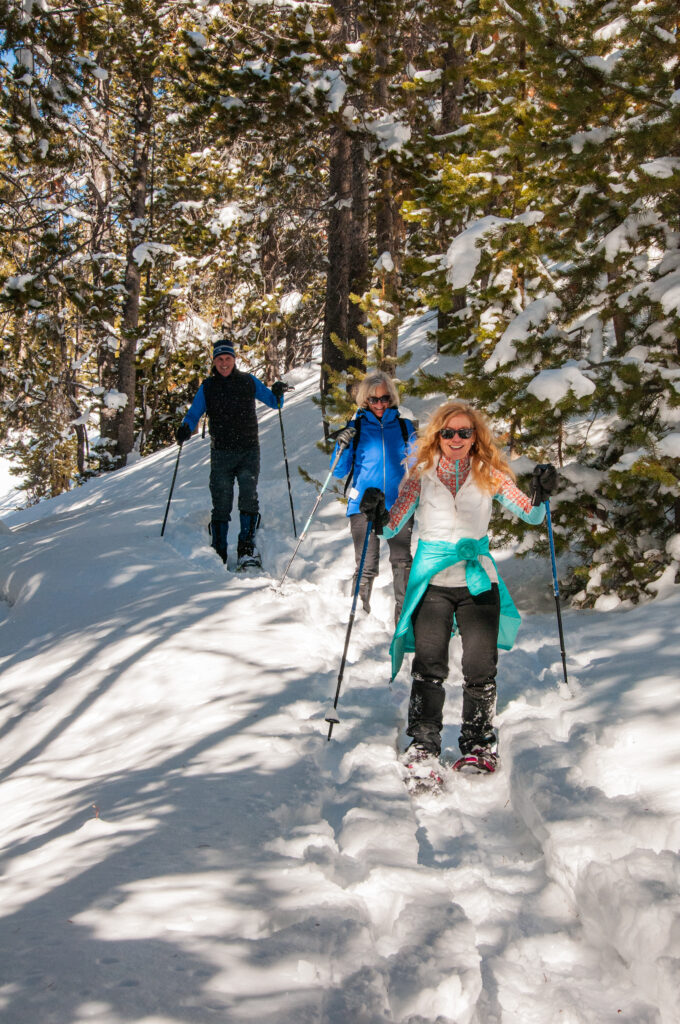
Always go out in a group, like these snowshoers in Yellowstone.
©iStock.com/Debbie Galbraith
Keep Your Distance
While visitors to Yellowstone are required to stay 25 yards away from animals such as bison, that distance goes up to 100 yards for wolves and bears. So take binoculars or a spotting scope to observe Yellowstone wildlife at a safe distance.
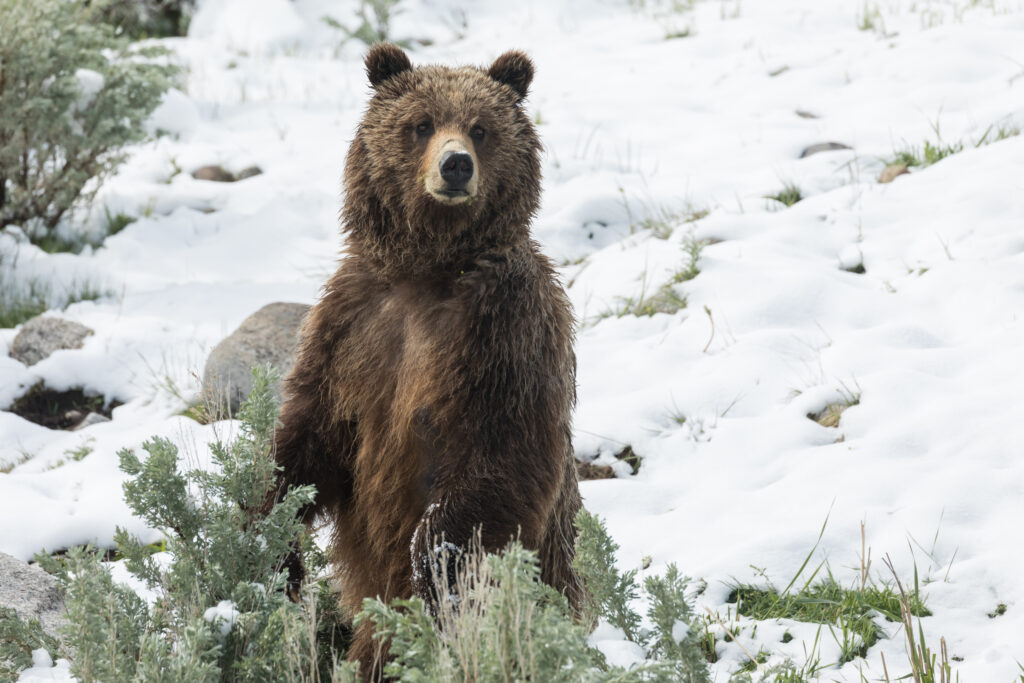
This mother bear is watching her cubs after emerging from winter hibernation. She’ll be watching you, too. Keep your distance!
©Kelp Grizzly Photography/Shutterstock.com
Always Carry Bear Spray
Bear spray is your last, best defense against a bear attack. It’s not enough to have the spray with you, though. You also must know how to use it effectively.
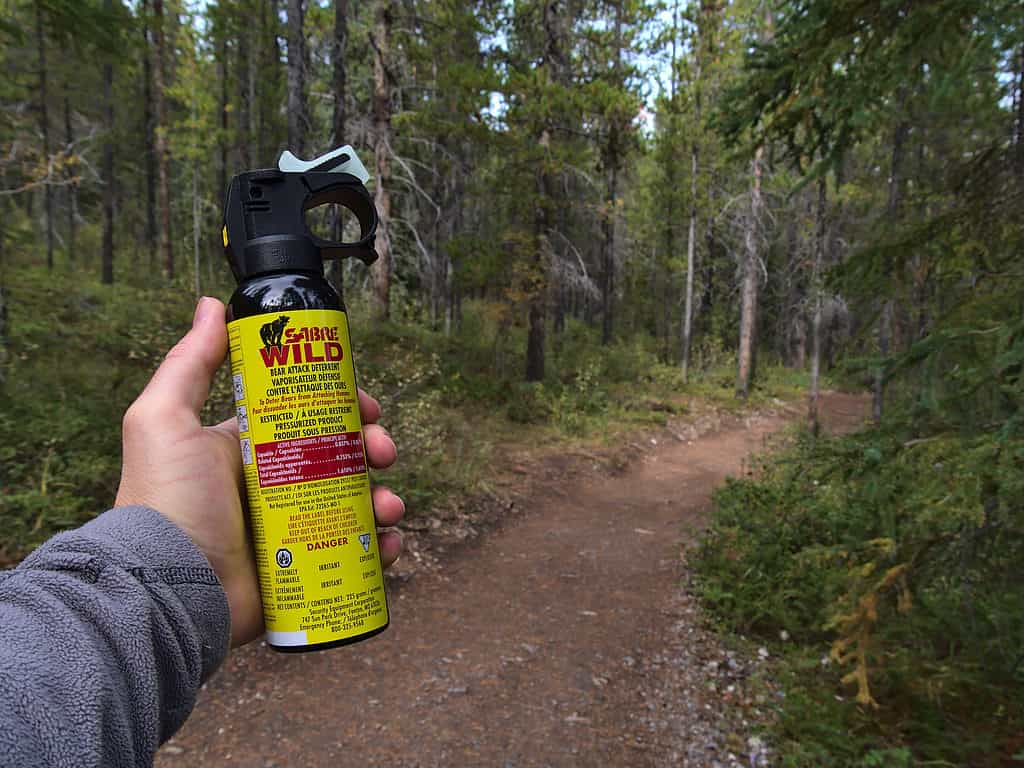
Always carry bear spray when hiking in the grizzly bear’s habitat.
©iStock.com/Timon Schneider
The photo featured at the top of this post is © Paul Knowles/Shutterstock.com
Thank you for reading! Have some feedback for us? Contact the AZ Animals editorial team.







